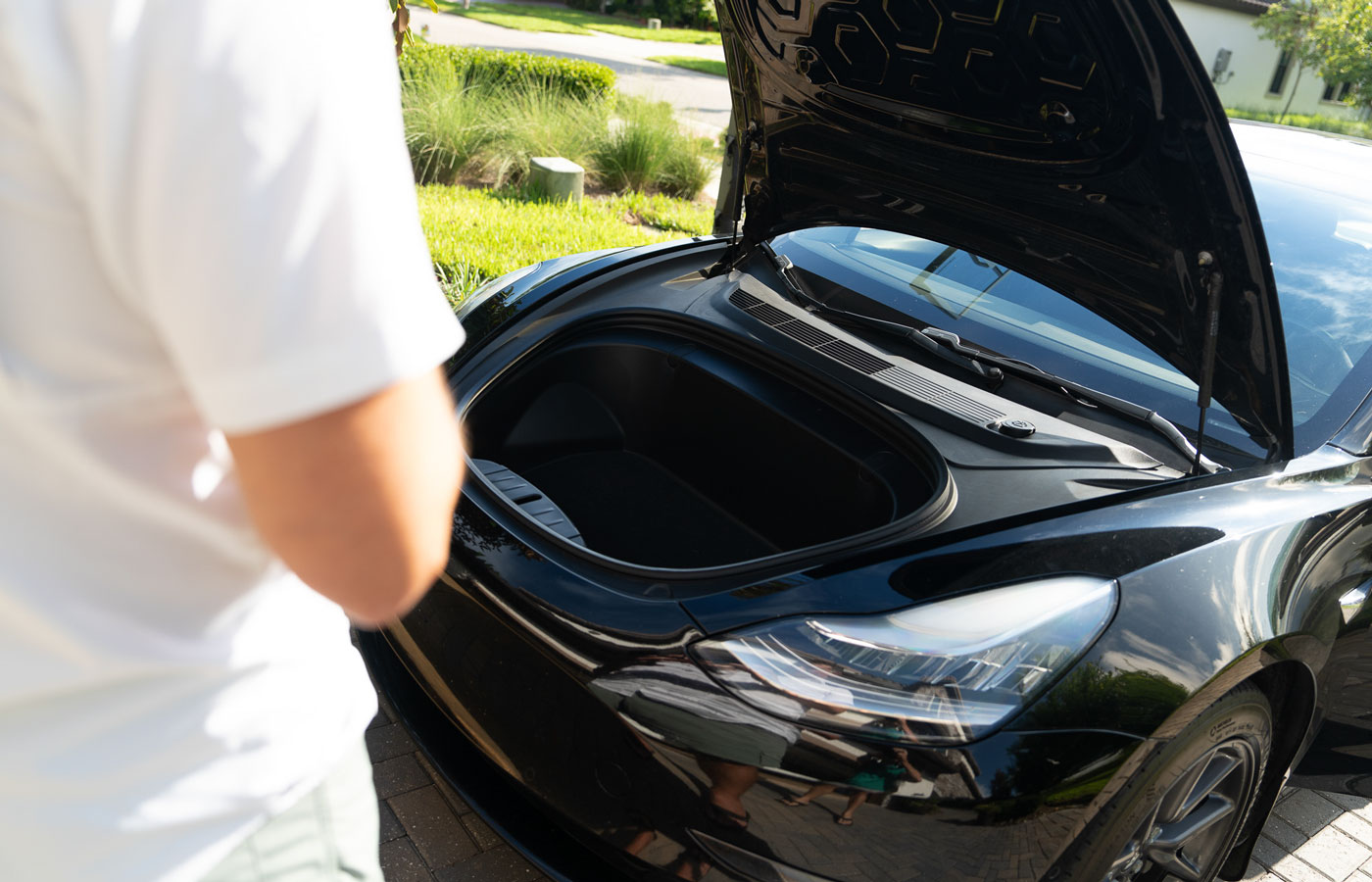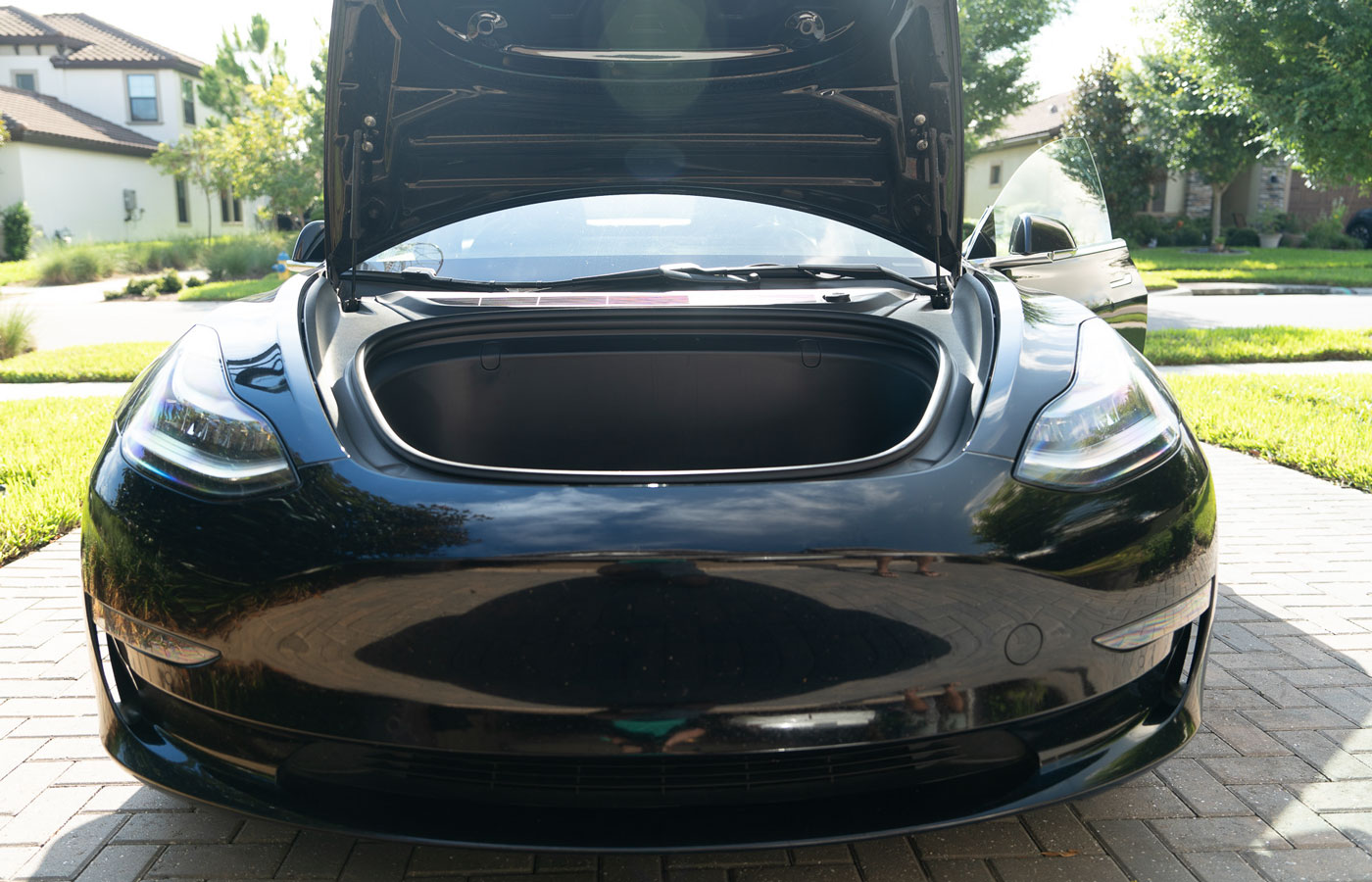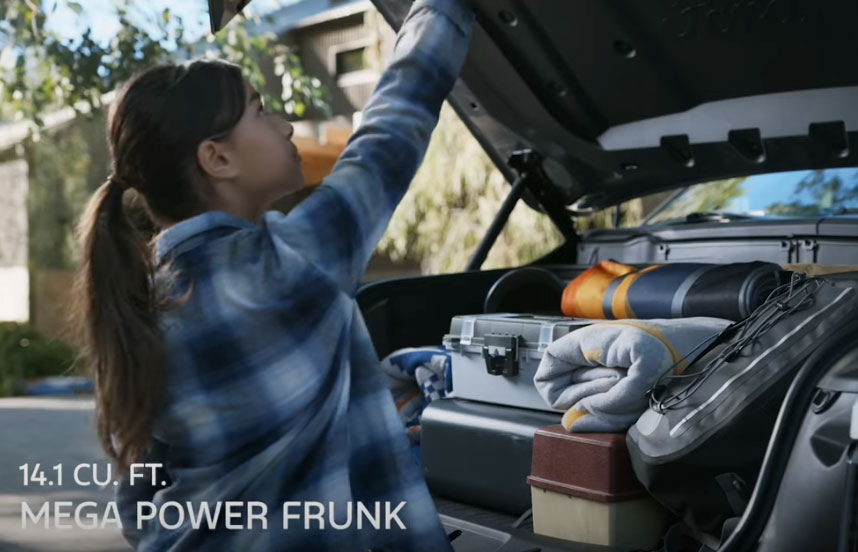What is a Frunk?
The Electric Vehicle Design Feature Adding Benefits and Convenience
 Michael Campo
Michael Campo
There are more than a few unusual words in the modern automotive dictionary, and as EVs continue to grow in popularity, “frunk” might reside somewhere near the top of the list.
In simple terms, “frunk” refers to the forward, under-the-hood storage compartment of a vehicle and is derived from the combination of the words “front” and “trunk.” But what purposes do frunks serve? Do they hold any benefit over a traditional trunk? And how do you open and close a frunk? Let’s dive in:
Frunk History
While the term “frunk” has gained recent recognition for its association with the EV movement, it’s by no means a new concept. The old-school Volkswagen Beetle and even the more modern Porsche 911 have frunks (cargo compartments under the front hoods) due to their rear-engine designs. Similarly, most EVs have been designed to house their critical battery cells in the rear or trunk area of the vehicle, designating the forward area of the car as a primary storage space.
Do All EVs Have a Frunk?
Nearly all EVs have a frunk since battery packs replace the enormous internal combustion engines that reside under the hood of most gas-powered cars. And as EV technology advances with the use of smaller and more densely packed batteries, you can expect to find both a trunk and frunk on a growing number of vehicles. This not only enhances the functionality of EVs, but it can also contribute to driver and passenger safety.
Benefits of a Frunk
Extra storage space is one of the largest and most visible benefits of an EV frunk, allowing for easy accessibility to groceries, sports gear, luggage and other items. But did you know there are safety benefits to a frunk as well? In the event of a frontal collision, a frunk can serve as a crumple zone, offering an additional buffer between the impact and the passengers of a car. And because frunks contribute to overall weight distribution of an EV, vehicle handling, stability and overall performance is said to be improved.
Typically constructed of EPP foam (a highly versatile, closed-cell bead insulator that’s both lightweight and strong), frunks have gained quite a fan following for their food storage capabilities and protection of temperature-sensitive items. And some auto makers are now adding handy modifications and features to their EPP-lined frunks that further enhance convenience:
- Dividers to easily change configuration
- Removable inserts with drain holes for easy clean-up
- USB and 120-volt chargers to power tools, lights and Bluetooth devices
- Slide-out compartments to contain loose items
- Underfloor storage
- Interior lighting
 Michael Campo
Michael Campo
How Does a Frunk Work?
Depending on the make of the EV, your frunk may open via a lever or button on the inside cabin, but many manufacturers also include options that allow you to open from a key fob, phone app or dashboard touchscreen. To close most frunks, you would take the same actions used to close a traditional hood.
A Frunk-Forward Future?
Frunk or no frunk, the decision is yours! But if you’re considering the purchase of an EV, it’s quite likely you’ll be looking at a frunk-forward future. So, whether you throw in a bag of ice and head to your favorite ballgame or load in the extra supplies needed for a long-haul commute, you’re sure to enjoy this new-again innovation that’s trending for its purpose and practicality.
